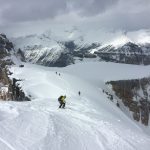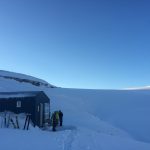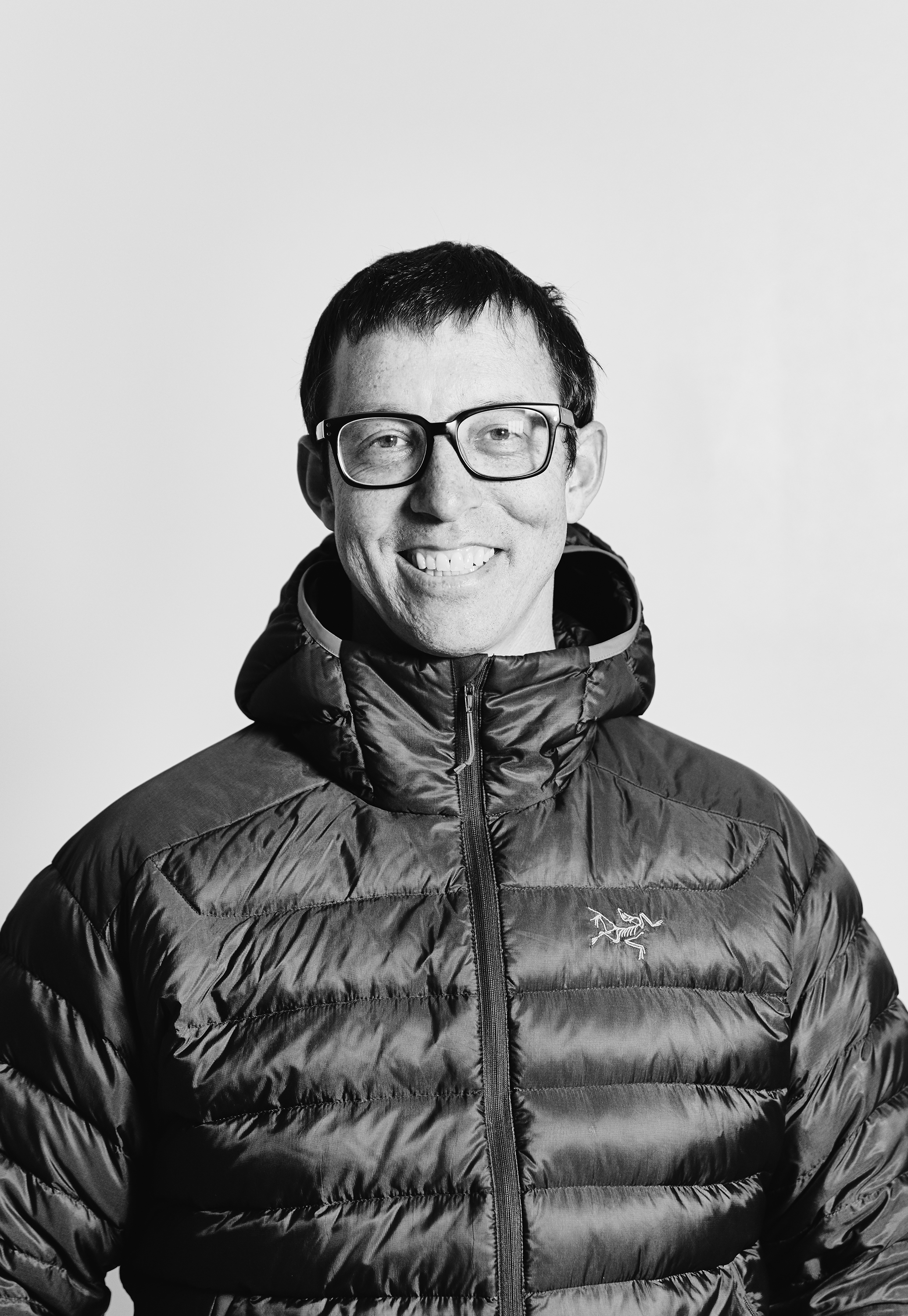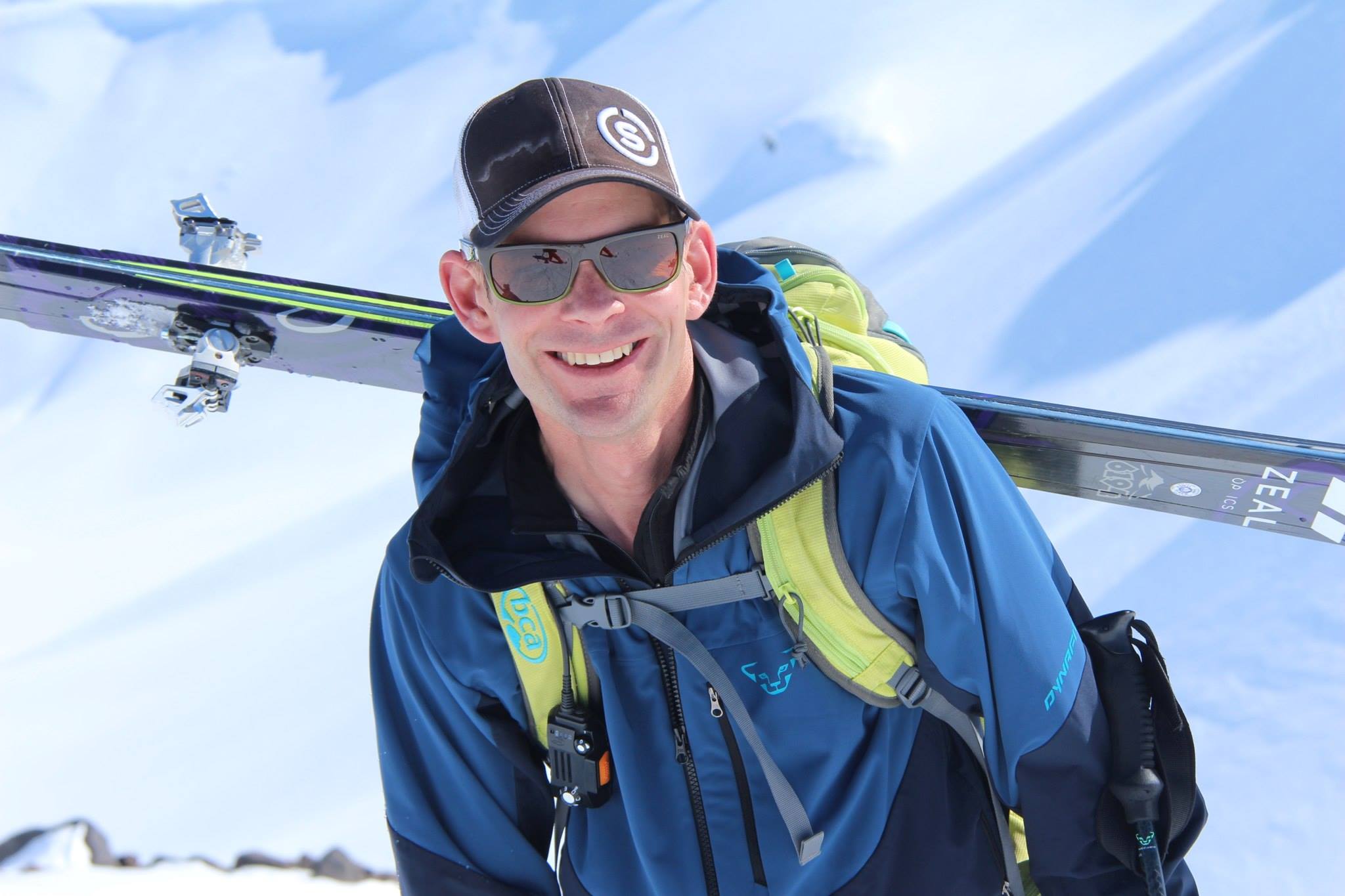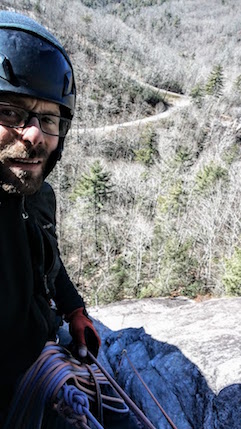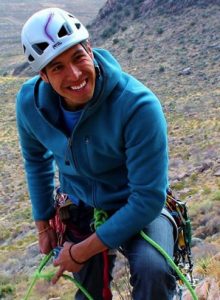Jeff Dobronyi, Recipient of the 2015 Chad Vander Ham Memorial Scholarship
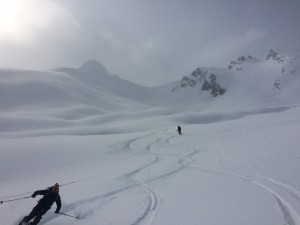
Andrew Kiefer and Victor McNeil, Hospital Bowl, Rogers Pass, Canada, on the Advanced Ski Guide Course and Aspirant Exam. Photo: Jeff Dobronyi
On March 29, 2015, I packed up my apartment in the San Juans and headed north to Golden, British Colubmia, for the AMGA’s Advanced Ski Guide Course and Aspirant Exam (ASGC/AE). After a winter of Ski Guiding for San Juan Mountain Guides in Ouray, Colo., I was feeling ready to spend some time in a new mountain range and continue my formal ski-guide training. As I drove west through the Canadian Rockies from Calgary to Canmore, Banff, and Lake Louise, the psyche continued to rise. I’d never been to this part of the world and was blown away by the scale and shape of Canada’s beautiful mountains. I spent a few days before the course exploring the classic ski tours around the Icefields Parkway and Rogers Pass, and even before I had received any instruction, I felt grateful for the opportunity to ski and climb in a new mountain range.
The Ski Guide Course left me with high expectations for the ASGC/AE. I knew I could
expect consecutive long days in the mountains filled with learning from the AMGA’s great instructors and from the experience of other students. The participants in this course brought a wide range of backgrounds, from certified Alpine and Rock Guides, to ski patrollers, to guides who were only pursuing the ski discipline. This spectrum was hugely beneficial, and I ended up learning just as much from the other students as from the AMGA’s three instructors. We 12 students were able to stay in the same large house (with a sweet hot tub), and it was awesome to spend our free time hanging out and getting to know each other, discussing guiding techniques and snow stability, and sharing stories and spray from our home mountains.
The curriculum seemed to focus on practicing and providing feedback on the skills from the Ski Guide Course, in addition to developing new skills for ski guiding in technical terrain, on glaciers, and managing longer and more complex days in the mountains. The instructors were more like mentors than teachers; each student had a solid background in ski guiding, and the instructors were mostly there to round out the rough edges rather than to teach new skills. The instructors rotated between groups, and because they each had different aspects of guiding that they tended to emphasize, we received feedback on the whole range of ski-guiding skills, from client comfort and safety, to ski technique and aesthetics, to technical efficiency. In addition to our regular morning and evening risk-management meetings, each touring group did a full debrief of each day to point out what went well and what could have been done better. This allowed students to learn from their mistakes as well as those of others.
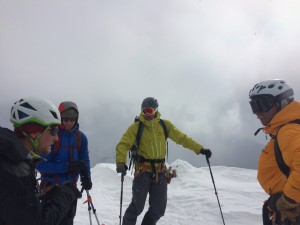
AMGA instructor Peter Leh talking to the group on the summit of Cathedral Mountain, BC. Photo: Jeff Dobronyi
I was amazed by how much I learned, from technical skills to exceptional client care, and everything in between. The AMGA did a great job of choosing an instructor team with a variety of experience and styles. But the biggest takeaway was everything I learned from the other students. In their courses, the AMGA is helping to create a stronger community of guides who are dedicated to the profession and to each other. We are all connected by a deep love of the mountains and a desire to share that love with others, and when something happens to one of us, it is felt by all. This is why I am honored to have received funding from the Chad Vander
Ham Memorial Fund to pay for this course. I am hugely grateful for all those who generously support mountain guides in their pursuit of training, mentorship, and certification. Through the AMGA, each guide’s sacrifice is transformed into an opportunity for us to deepen our connections with our work and with each other.




